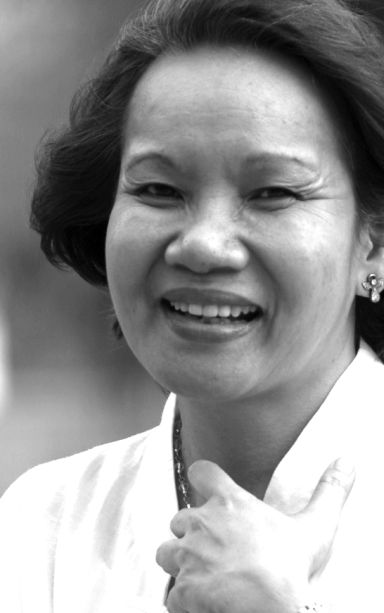
LOGARTA
Editor’s note: This column which appeared in yesterday’s issue was inadvertently cut hence we are reprinting it in its entirety.
Our Lady of Joy Learning Center had such a beautiful way of celebrating Mothers’ Day. As Mary Rose Villacastin-Maghuyop and Bobby Bargamento were winding the Theatre Summer Workshop, they chose to have Mothers’ Day celebration as the culminating activity. The students prepared various dance interpretations of mother-related music.
“Mary’s Faith” was the music for the opening number. That was, of course, most fitting because all appreciation for mothers rightfully begins with our Mother Mary. Her faith started it all. It reminded me of her mother moments: her serene contemplation of the infant Jesus; her search for Him and finding Him, his reminder on His Father’s business. She refused to be discouraged when He said it was not yet the Time in Cana; instead she asked the servers to follow His instructions. I also recalled how my memory of the film “The Passion of the Christ” is the the question I kept asking: who is more pained — the person actually suffering or those who love him and accompany him in this pain? Very clearly she had been given to us as a mother.
A main part of the presentation were the dances to the tune of lullabies. They made it a point that the various regions of the country were represented in the lullabies played. Luzon was represented with “Sa Ugoy ng Duyan.” The warmth and soothing quality of mother’s love was directly felt with this music and the dancing.
Because of the experience, I soaked myself in the singing of Lea Salonga and Aiza Seguerra to catch some comfort, security and love.
“Ili-ili Tulog Anay” represented the Visayas. It represents another image of the mother. In the song the child is asked “to sleep for a while” because the mother is out to work. Then the succeeding stanza tells the child to sleep for a while for when he wakes up, he will be with the mother to help her.
What a very concrete way of loving — working for a loved one. As Gibran said, “Work is love made visible.”
Perhaps one might find most moving the song from Mindanao, “Meme na Mindanao.” A mother sings about hoping for peace, dreaming of time when her child can grow in peace. So I checked on it and found out that this was really a poem by Fr. Alejo, SJ. Both the lyrics and melody are very moving.
It dawns on us that mothers suffer the most in times of conflict and other disasters. But they never give up they keep on “gathering their flock,” they continue making the most out of everything and making themselves the last priority. In their hearts they keep the hope that the children can grow up in an atmosphere of serenity.
Then Mary Rose offered a special Mother’s Day gift to her mother. She and Bobby danced Baleleng, a dance from the Jolo archipelago. It is a farewell dance for someone going on a mission. Perhaps because Jolo is an archipelago, goodbye is said by the sea and movements and music are in imitation of waves. This is actually the favorite of Mary Rose’s father. The performance was excellent. A viewer actually said, “Kana ma’oy sayaw!”
Mother’s Day reminds me of my encounter with mothers as a teacher. Mother’s love prompted two mothers to scold me. One mother approached me after report cards had been distributed and said: “It’s because of you she got a low grade because she is afraid of you.” Another mother asked: “How could you trust a fourteen-year-old to request for a make-up test?” Another mother cried for almost an hour to plead that her daughter graduate with her batch, even if she had failed in a subject. One woman approached me to request to have a look at one of our students, she wanted to see the love child of her son.
Mothers still do most of the things in the home and within the family. Oftentimes, they are blamed for limitations or failures of their children. But we all need to respond with mother’s love, always to anticipate needs, wisely to provide appropriate responses. I am glad I am living with my brother’s family, and I am happy that his wife allows me to share in the mothering. Since we want females to flourish and bloom with all their creative potentials both as individuals and within institutions, we all have to take part in the tasks of mothering. Our communities have a great deal to gain if we all share in mothering. We haven’t fully realized what our communities are missing in leaving mothers to do all the various tasks of child caring and rearing.